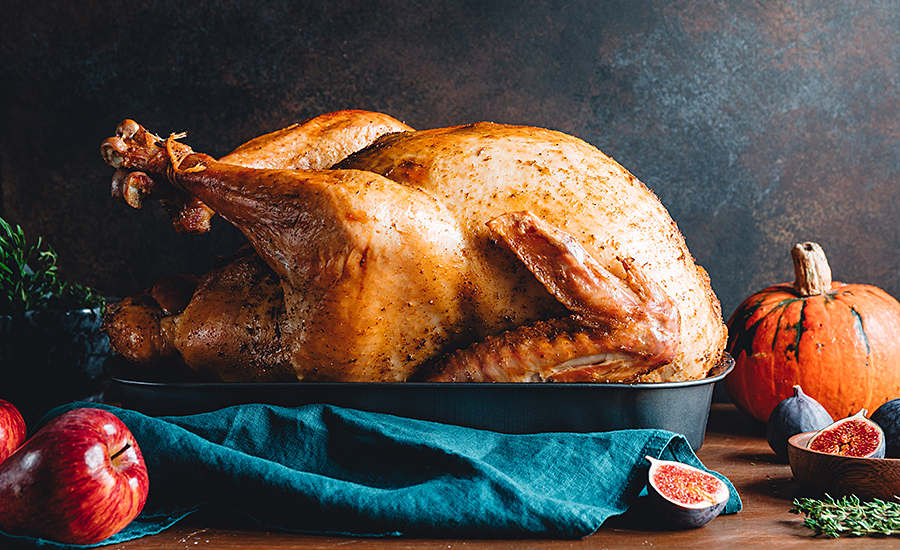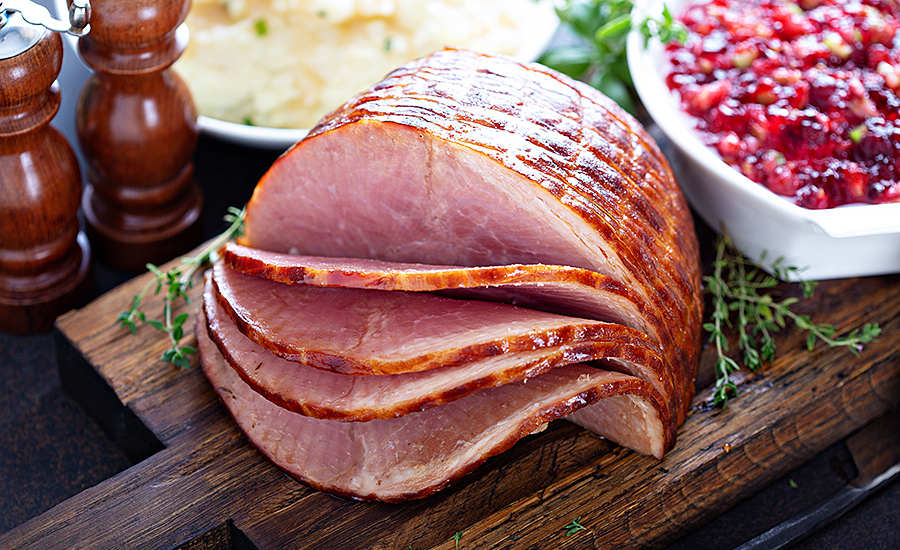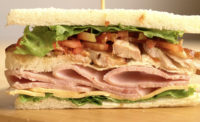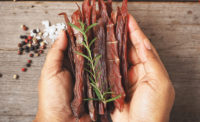As much as we may hope for traditional gatherings over the holidays, this year’s celebrations will certainly look different because of COVID-19. But younger consumers were already driving changes to holiday celebrations. Our holiday meals may not look the same this year, but still have opportunities to offer comforting nostalgia or experiment with smaller, unique offerings of protein.
“As much as we talk about the changing food culture, some things are very much the same,” says Anne-Marie Roerink at 210 Analytics, in San Antonio. “And Thanksgiving dinner is one of those deeply rooted traditions. The vast majority of consumers celebrate, and turkey is an integral part of the holiday.” Meat and poultry remain a strong tradition with other big holidays, as well.
What is changing, however, is that shoppers don’t automatically opt for the traditional route of preparing the meat at home, says Roerink. Or they may only prepare the turkey or ham and order pre-made sides.
“Many of these changes are driven by Millennials, and the way they interact with meat in their everyday decisions,” Roerink says. “Even now, in their family-raising years, Millennials are still less likely to cook and over index for eating out.”
"Preserving holiday traditions will look a bit different this year, but there are certain things that will remain constant."
— Mel Coleman Jr.,
Coleman Natural Foods
Or, Millennials are more likely to consider ready-made holiday solutions from the grocery deli or restaurants. “While still a very small share of holiday meal spending, it is an interesting opportunity for operators,” Roerink says.
This combination of tradition and convenience is hardly surprising considering what is happening in everyday meat, poultry and seafood sales. “Every form of convenience is growing dollars, from value-added, fully cooked, prepared meats in the deli, frozen and meal kits,” says Roerink. “Consumers are pressured for time and seeking quality experiences in their everyday dining.”
While traditions are important for holidays, convenience clearly matters, especially to younger consumers. That quest for convenience and variety is likely to prompt more of the meals being ordered in, experimenting with holiday meal kits or even eating traditional meals at restaurants, Roerink says.
“At the same time that tradition is upholding some sales patterns and choices in holiday meats, there are changes as well,” Roerink says. “One is when shoppers purchase. From seasonal candy to the Thanksgiving turkey, retailers are dealing with a compressed season. So for operators and grocery delis, who want their orders in early, this is a bit of a logistical challenge to market against.”

Holidays during a pandemic
Because of the pandemic, the holidays this year will look quite different from previous years, with social distancing, smaller family gatherings and less travel. In fact, 56 percent of consumers report they are more likely to entertain at home more often this year versus 11 percent who will entertain at restaurants, according to Technomic’s Impact Monitor 10th Edition, week ending May 22, 2020.
“Preserving holiday traditions will look a bit different this year, but there are certain things that will remain constant,” says Mel Coleman, Jr., vice president of Coleman Natural Foods, based in Golden, Colo. “Hams have been a staple at holiday gatherings for centuries, as the salted and cured cuts were able to be preserved and saved for important occasions.”
In a chaotic time, traditions may be more important than ever — just on a smaller scale. “The meaning of family and community are more relevant than ever and the comfort of a healthy, hearty meal is something people crave,” Coleman says. “For that reason, while we expect people to want the holiday meal with all the fixings, it might be a smaller number of people around the table.”
It will be important for consumers to have more options: to get the big spiral ham, or maybe downsize a bit this year with a half ham or even just a ham steak for two, says Coleman.
“We also may have people going for the full-size spiral ham out of tradition, but then needing to find ways to use up those leftovers,” he says. “We have content available on our website with dozens of options for ham leftovers and plan to focus more content development around that theme as the holidays approach. With as many as 21 meals cooked at home each week, consumers can never have too many new options to keep things interesting.”
If family celebrations are going to be smaller, there’s room to experiment with different proteins or serving smaller portions. “We’re also seeing Millennials look to meat variety, serving both the traditional meat choice — turkey, ham, etc. — along with other choices such as lamb, steak or fish,” Roerink says. “So, it’s not always about the whole bird or a 20-pound ham anymore, and I wouldn’t be surprised if we’re going to see more of that this year.”
Whether intentional or not, during the height of the meat shortages this spring, we saw consumers engage with all sorts of proteins and cuts they normally didn’t buy, such as lamb, bison, ribs, roasts, etc., she says.
“The pandemic will have had a positive influence on consumers’ confidence around meat, so we may see a bit more experimentation in upcoming holidays,” Roerink says.
Preparation methods and flavorings may also change. “There is more experimentation in the holidays, much like we see in every day,” says Roerink. “As Millennials are developing their own traditions, separate from their Gen X or Boomer parents, this will cause shifts both at retail and foodservice.”
Millennials, in particular, are looking for traditions with a twist. “This may be serving a combination of different meats, poultry and seafood, and even experimentation with exotic meats in combination with traditional options,” Roerink says. “This may be outsourcing preparation or eating at a restaurant. This may be different preparation methods or spices.”

Quality matters
We’re also seeing that this group has an interest in meat and poultry featuring production claims in their everyday purchases, Roerink says.
“During the holidays, they are interested in these same claims,” Roerink says. “These may be claims like ‘Raised in the US,’ antibiotic free and all-natural. Production claims have been driving above-average growth for meat for years.”
As such, we see farmers’ markets now becoming active players in holiday turkey, as well as online meat companies, as claims-based meats such as a whole turkey may be hard to find in the local grocery store. Not surprisingly, quality is key during holidays as people splurge a little more on having a great meal with family.
“In the Power of Meat 2020 study, they asked consumers what production claims they wanted their meat department to carry more of and the top five related to pork products were antibiotic-free, hormone-free, raised in the USA, all-natural and humanely raised,” says Coleman. “At Coleman Natural, these have always been qualities we’ve offered and I think in the last few years antibiotics have been at the forefront, but now more than ever these others are bubbling up as top of mind for consumers.”
Budgets are being tightened and shoppers today want to make sure when they do spend money, they are buying quality food they feel good about feeding their family, he says. “Consumers are more interested in where their food is coming from and are looking for meat products raised and processed in the US on farms that care about the humane treatment of their animals,” says Coleman.
Coleman Natural Foods requires farmers to raise their livestock 100 percent crate free, which results in a healthier, stronger animal who can exhibit natural behavior throughout their life. “We believe a healthier, less stressed animal means better meat quality and a great tasting product for our customers,” Coleman says. “For added consumer confidence, our production standards are third-party audited and all the farmers we work with are American Humane Certified, meeting or exceeding more than 200 science-based animal care standards.”
Ordering comfort foods
“Everyday traditions certainly play into holiday choices,” Roerink says. “This means virtually every restaurant type has opportunity during the holidays. It is important to keep in mind that while the execution of holiday meals may be different among different cohorts, the importance of celebration and togetherness are universal to all.”
Re-creating those elements of the family or friends dinner in the restaurant setting is key to success, along with bringing in the traditional dishes that are so integral to the holiday celebrations.
“That says, the upcoming holiday season will be highly influenced by the state of coronavirus,” Roerink says. “On the one hand, we’re seeing consumers getting restless after months of preparing way more meals at home than they are used to and they will be eager to outsource meal preparation to someone else. On the other hand, there are still a lot of consumers who are not going out to restaurants, even if they are open in their areas.”
Thanksgiving-inspired flavors and meats like turkey will certainly be on the menu. “This can vary by restaurant, but consumers in our brand tracker survey BrandFingerprints tell us that they are encouraged to buy items like the seasonal turkey ‘Gobbler’ bowl from Wawa,” says Jamie Howe, director, Datassential, based in Chicago.
"The pandemic has brought more creativity to consumers' kitchens, but certainly foodservice has become much more creative in their going to market strategies as well."
— Anne-Marie Roerink,
210 Analytics
As temperatures drop, comfort foods with proteins prepped low and slow, Howe says. “There is an example of a Maggiano’s Braised Short Rib that scored in the 93rd percentile for purchase intent,” says Howe. “That means it is in the top 10 percent among the thousands of restaurant items Datassential tests with consumers. Note, purchase intent is defined by consumers who say they definitely or probably would buy the item at a restaurant.”
Unique game proteins and German-inspired dishes are also more common during this time of the year, Howe says.
“Handhelds and sandwiches are ways to embrace seasonal trends, with hot sandwiches being more common in cold months featuring turkey, prime rib and meatloaf proteins,” Howe says. Panera Bread, for example, last fall offered a Roasted Turkey, Apple and Cheddar Sandwich with cabbage slaw, arugula and mustard horseradish sauce on cranberry walnut bread.
Restaurants are also more likely this year to prepare ready-to-cook meal kits based on their tried-and-true recipes, as well as more traditional takeout packages. “The pandemic has brought more creativity to consumers’ kitchens, but certainly foodservice has become much more creative in their going to market strategies as well,” Roerink says.
Whether consumers celebrate the holidays at home or at restaurants, it’s safe to assume they will expect traditional options in a convenient format. NP





Report Abusive Comment